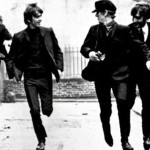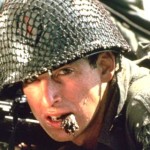
Sergio Leone proudly served up his finest Spaghetti Western to a Roman audience in the final days of 1966. The premiere print of “The Good, the Bad and the Ugly” sprawled over three hours in telling its tale of three desperados in search of gold amidst the chaos of the Civil War.
Leone, a volatile Italian who brought his sensibilities as an art collector to his work, was not a filmmaker to be rushed. “I think he wanted to become David Lean,” his star, Clint Eastwood, has said.
The men from United Artists also were on the trail of treasure. American audiences, they knew, would not sit for a 178-minute western, especially not an import starring a TV actor (Eastwood).
Out came 17 minutes, and so was breach-born the version of “Good, Bad and Ugly” that has endured as a male-bonding touchstone for four decades. “Leone had a big quarrel” with the distributor, recalls co-star Eli Wallach. “It riled him” to make the cut.
Looking to make things right (and to mine more gold), MGM a few years ago decided to re-create the storied film that unspooled in Rome that night. The restored, full-length English version of Leone’s epic had a limited theatrical rerelease in 2003 and is available in an outstanding two-disc DVD Collector’s Set from MGM.
(This review refers to the DVD release of 2004, which is identical to the version in the 2007 “The Sergio Leone Anthology,” with the exception of the lobby postcards that were included in the 2004 box.)
Leone’s film loses much on the small screen — its borderline-surrealistic vistas shot in Spain are legendary — but the DVD’s visuals are clean, with decent contrasts (anamorphic widescreen, 2.35:1). Compared with MGM’s 1998 release, there’s a dramatic reduction in flatness, speckling and miscellaneous wear. The 5.1 Dolby Digital audio has its moments but isn’t up to the standards of the imagery.
The DVD medium is, of course, unrivaled at presenting the history of complicated productions such as these. MGM’s set gets that job done, for the most part.
Eastwood biographer Richard Schickel does the heavy lifting in a commentary that, amazingly, runs on fumes only near the end of three hours.
He maintains that Leone’s artistry was lost on critics of the 1960s because of the debate over the film’s violence (the New York Times pan was titled “The Burn, the Gouge and the Mangle”). Leone was relatively tame by today’s standards, employing “an enormous amount of foreplay” before the killings, as in this movie’s famous final shootout, Schickel remarks.
Leone’s message had everything to do with the devastation of World War II on Europe, Schickel says. The film is “implicitly about the lingering effects of vast combat on people. … All bets are off, morally speaking.” The antiheroes’ acts of violence were dwarfed by the evil of the collective, personified by the Blue and Gray armies. In scenes inside an Andersonville-like prison, the sounds of torture are drowned out by inmates “playing for time” in an orchestra, as they did in Nazi death camps.
Schickel notes that Eastwood’s character — improbably dubbed Blondie (no, not the marketing creation the Man With No Name) — operates with the extrasensory perception powers of sight and hearing that American cowboy stars have employed since the days of Tom Mix. He brought the cheap cigars from L.A.’s Fairfax district.
When Eastwood rides off as the film fades to black, Schickel says, it is “the end of one of the great modern movie collaborations” between a star and director. No love lost, but Eastwood and Leone apparently reconciled before the Italian’s death in 1989.
The 2002 restoration project is covered in an 11-minute docu. Paul Rutan Jr. of Triage Labs gives an overview of the Techniscope format used on the film — a more versatile and economical cousin of Cinemascope — and tells how his company handled the obsolete format. “We can definitely make it look better” than when the film came out, he says.
MGM’s John Kirk covers the audio restoration, a sore spot for Leone purists. Eastwood and Wallach rerecorded their voices in 2002 for the restored scenes, which had never been dubbed. (Everyone on the production just spoke whatever language they spoke.) Another actor stood in for the late Lee Van Cleef.
Kirk defends the use of new sound effects for some of the weaponry, citing phasing problems and the requirements of 5.1 sound. The old mono explosions “would have sounded awful,” he says. (The DVD includes an original Italian soundtrack for those truly offended.)
Kirk used the Italian distribution print as a bible, adding the scenes previously available (in Italian) on the old MGM DVD. He also inserted the long-deleted grotto scene because it fixed an obvious continuity problem. An extended torture scene with Wallach’s character comes as an extra but could not be used because of damage. Another scene, which includes shots of Eastwood in bed with a Mexican beauty, is pieced together as an extra. A French trailer offers glimpses of other footage.
Eastwood, Wallach, Schickel, dubbing supervisor Mickey Knox and producer Alberto Grimaldi appear in a pair of featurettes. Wallach, a Method man from New York, thought a “spaghetti Western was like Hawaiian pizza” when first approached. Eastwood speaks with humor and enthusiasm about “the adventure in Spain.”
“Good, Bad and Ugly” is as closely associated with composer Ennio Morricone as with Leone. Film music historian Jon Burlingame talks about the maestro in a short featurette and in a more-detailed audio lecture. No explanation is given for Morricone’s lack of participation on the DVD.
Morricone was a relative newcomer when he first worked with Leone on “A Fistful of Dollars” (one of the director’s two other films starring Eastwood). Leone’s old schoolmate was “uniquely suited to films,” with a background in the avant-garde, the classics and Italian variety shows, Burlingame says.
For “Good, Bad and Ugly,” Leone demanded a score that rebelled against the sonic pablum of most Westerns. Morricone responded with a groundbreaking mix that included electric guitars, grunts, animal cries and other found sounds. He went on to make 400 or so movies, some of them classics, but none with a more famous score.



Leave a Reply